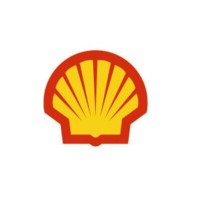
A new climate blueprint is taking shape
In the race toward net-zero, North America is no longer just participating, it's engineering a new roadmap. At the center of this transformation are three technologies making serious waves: blue ammonia, direct air capture (DAC), and sustainable aviation fuel (SAF). On their own, they’re powerful. Combined, they’re redefining how the U.S. and Canada tackle climate targets while creating new economic opportunities.
These aren’t future bets. They're happening now, thanks to policy tailwinds like the U.S. Inflation Reduction Act (IRA) and Canada’s Clean Fuel Regulations, which have unlocked massive funding and market incentives across clean hydrogen, carbon capture, and low-emissions fuels.
>> RELATED: Sustainable Flight Takes Off: Inside the Big SAF Bet Backed by Carbon Tech

Why blue ammonia is stealing the hydrogen spotlight
Blue ammonia, ammonia made from hydrogen where the carbon emissions are captured and stored, is emerging as a key carrier for clean hydrogen exports. It’s stable, energy-dense, and crucially, compatible with existing infrastructure.
One of the most visible players in this space is CF Industries, which recently announced a $2 billion blue ammonia production facility in Louisiana in partnership with Mitsui & Co.. This project, expected to begin production in 2027, will use natural gas as a feedstock while capturing and storing up to 2.5 million metric tons of CO₂ annually.
Another example is Air Products, developing a world-scale $4.5 billion blue hydrogen and ammonia facility in Texas. With CCS integrated from the ground up, this plant will sequester 5 million metric tons of CO₂ per year and deliver blue ammonia to global markets hungry for clean fuels.
According to Dan Brouillette, President of Sempra Infrastructure, "blue ammonia is an export-ready solution that fits within today’s energy systems but aligns with tomorrow’s climate goals."
The rise of DAC hubs across the continent
DAC isn’t just a concept anymore, it's a growing network of industrial-scale carbon removal hubs backed by billions in federal support. The U.S. Department of Energy is funding four regional DAC hubs under its $3.5 billion Regional DAC Hubs program.
CarbonCapture Inc. and Frontier Carbon Solutions are leading development of Project Bison in Wyoming, which aims to capture and store up to 5 million metric tons of CO₂ annually by 2030. Meanwhile, in Canada, Deep Sky is scaling up its tech-agnostic DAC model with its first facility, Deep Sky Alpha, launching this year.
Rubicon Carbon, one of the biggest buyers of high-integrity carbon credits, recently signed a multi-year offtake agreement with Deep Sky. This type of partnership shows that DAC is not only feasible, it’s already commercializing.
Projected Decline in DAC Cost (2020–2035)
*Illustrative projection based on industry and public data (e.g. IEA, DOE, Carbon Engineering). Actual costs may vary.*
SAF is the endgame, and these technologies make it viable
Airlines are under intense pressure to decarbonize, and SAF is the only near-term tool that fits into existing aviation infrastructure. But feedstock challenges and high costs have kept SAF production limited, until now.
Blue ammonia offers a pathway to create hydrogen-derived SAF, especially when paired with DAC for additional carbon capture credits. Carbon Engineering, acquired by Occidental, is already working on combining DAC with SAF production at its Stratos plant in Texas, slated for completion in the late 2020s.
In Canada, Aemetis is building a multi-million-gallon SAF plant in Ontario that will use carbon-negative feedstocks and could benefit from DAC integration as the technology scales.
Anna Mascolo, President of Shell Aviation, recently stated, “We are committed to SAF as a key decarbonization lever, but success depends on parallel investments in hydrogen and carbon capture ecosystems.”
>> In Other News: Study Shows Making Hydrogen With Soda Cans and Seawater is Scalable and Sustainable
Real projects, real progress
At-a-Glance: Where the Market is Headed
| Technology | 2025 Figure | 2030 Projection | Key Cost Metric |
|---|---|---|---|
| DAC Capacity | 59 kt CO₂/yr | 569 kt CO₂/yr (873% growth) | $1,000 → $100–$232/tonne |
| Blue Ammonia Market | $45M | $1.5B (42.5% CAGR) | $471/mt (US Gulf Coast) |
| US SAF Capacity | 2,000 barrels/day | 30,000 barrels/day | 10x growth by 2024 |
Projects like the Midwest Alliance for Clean Hydrogen (MachH2), which includes BP and other heavyweights, are tying together blue hydrogen, CCS, and SAF production with regional infrastructure and workforce development.
Meanwhile, Occidental’s 1PointFive is building the world’s largest DAC facility in Texas, with ambitions to integrate it into SAF supply chains through strategic partnerships.
And in Alberta, Air Products Canada is investing $1.6 billion in a net-zero hydrogen energy complex that includes blue hydrogen, CCS, and plans for ammonia production, all of which could be used in SAF blends for aviation.
The big picture: integration is the innovation
None of these technologies alone will decarbonize the aviation sector or deliver a clean hydrogen economy. But together—blue ammonia to move energy, DAC to remove emissions, and SAF to clean up aviation—they represent a systems-level transformation.
The combination is technically sound, commercially attractive, and increasingly backed by policy. And most importantly, it leverages existing industrial assets while pushing the boundary of what’s possible.
This is no longer an experiment. It’s a strategy, and North America is racing to lead it.
Subscribe to the newsletter
Daily decarbonization data and news delivered to your inbox
Follow the money flow of climate, technology, and energy investments to uncover new opportunities and jobs.
Companies
-
BP plc
BP
-
CF Industries Holdings
CF
-

Shell
SHEL
-
1
1pointFive
z
-
Occidental Petroleum Corporation
OXY
-
Air Products & Chemicals Inc.
APD
-
C
Carbon Engineering
-

CarbonCapture Inc
Latest issues
-
The $27/ton Question: What Makes a Carbon Removal Credit Worth 3x More?
Inside This Issue 💰 The $27/ton Question: What Makes a Carbon Removal Credit Worth 3x More? 🛢️ EPA Issues Three Class VI Permits to ExxonMobil in Jefferson County, Texas 🌍 UN Endorses First Articl...
-
Everyone’s Watching Texas — But California Just Made Its Move
Inside This Issue 🪣 Shovels Hit the Ground on California’s First Carbon Storage Hub 🤝 CHARBONE Announces a Strategic Alliance with a Leading U.S. Industrial Gas Producer 📜 Gold Standard Approves M...
-
From Mars to AI: Fuel Cells Power $28B Boom
Inside This Issue 🧠 From Mars to AI: Fuel Cells Power $28B Boom 🏆 Svante Technologies Wins Global Award for Breakthrough Carbon Capture Innovation 🚧 California Resources Corporation Breaks Ground ...
Company Announcements
-
The United Nations has taken a major step in global carbon markets. A UN panel has approved the first methodology under Article 6.4 of the Paris Agreement. This marks the start of a new era in inte...
-
EPA Issues Three Class VI Permits to ExxonMobil in Jefferson County, Texas
DALLAS, TEXAS (October 21, 2025) – The U.S. Environmental Protection Agency (EPA) issued three final Underground Injection Control (UIC) Class VI permits to ExxonMobil for a project in Jefferson Co...
-
NewHydrogen To Release A Special Report On October 27, 2025
The Company will reveal a massive source of heat for its novel ThermoLoop™ heat-based water-splitting system SANTA CLARITA, Calif., Oct. 22, 2025 (GLOBE NEWSWIRE) -- NewHydrogen, Inc. (OTCQB: NEWH...
-
Microsoft Signs New Deal To Capture Carbon In Rocks And Soil
UNDO, an enhanced rock weathering (ERW)-focused carbon removal project developer, announced that it has signed a new agreement with Microsoft to permanently remove 28,900 tonnes of CO2 from the atm...